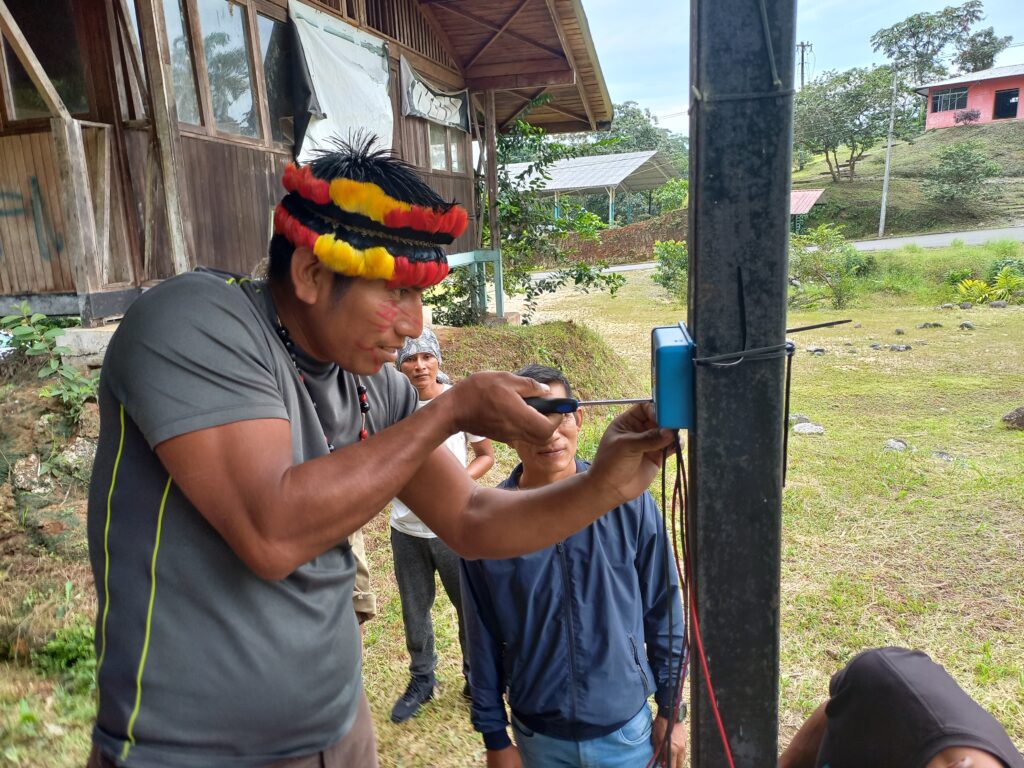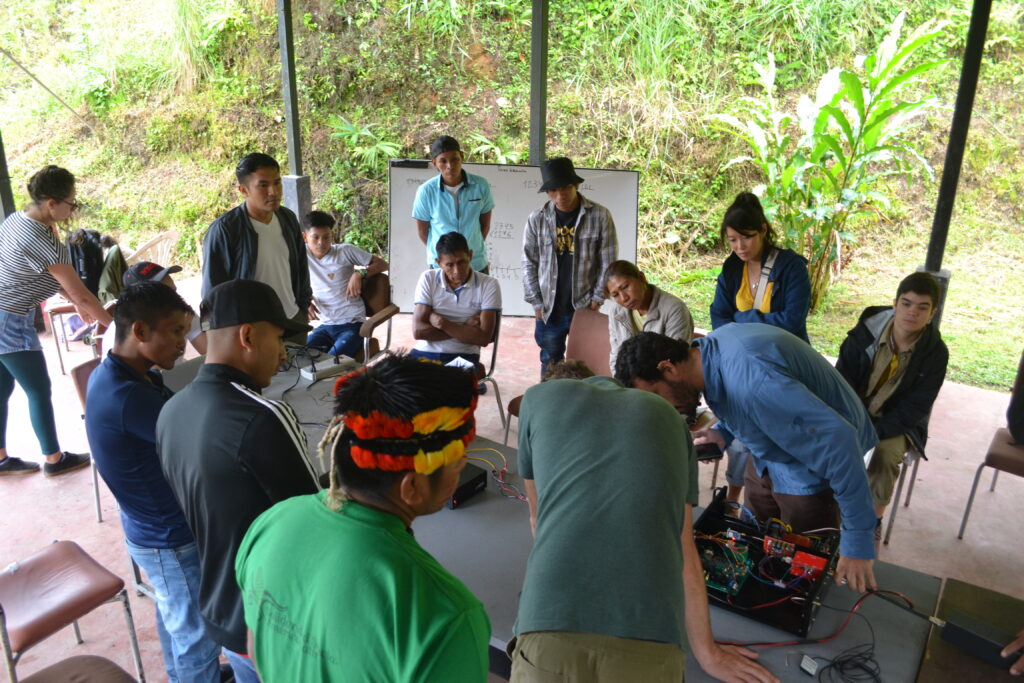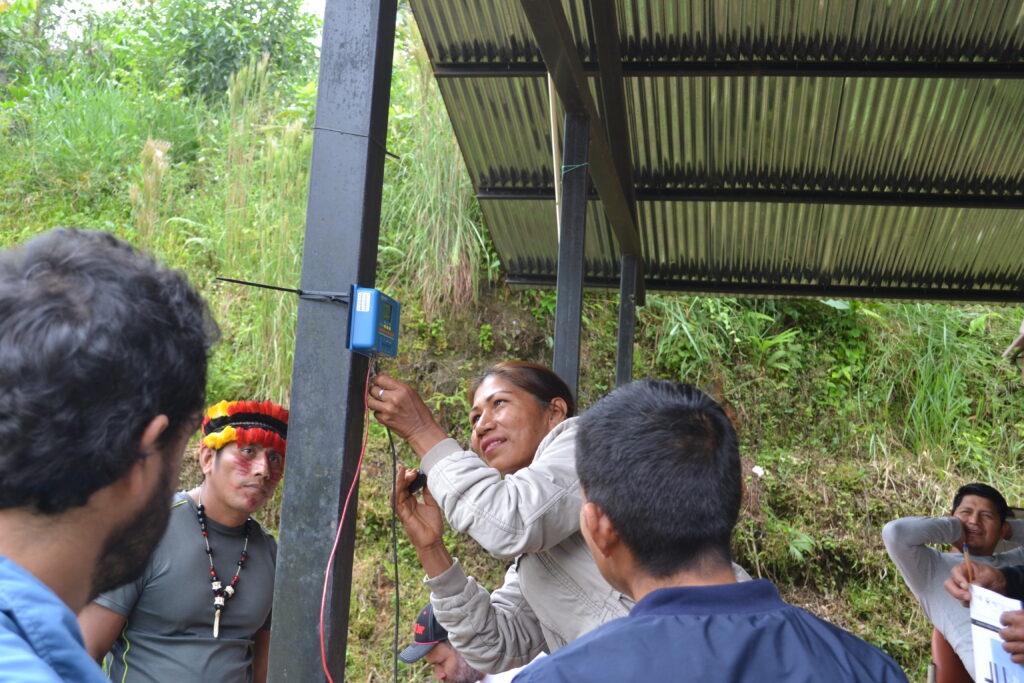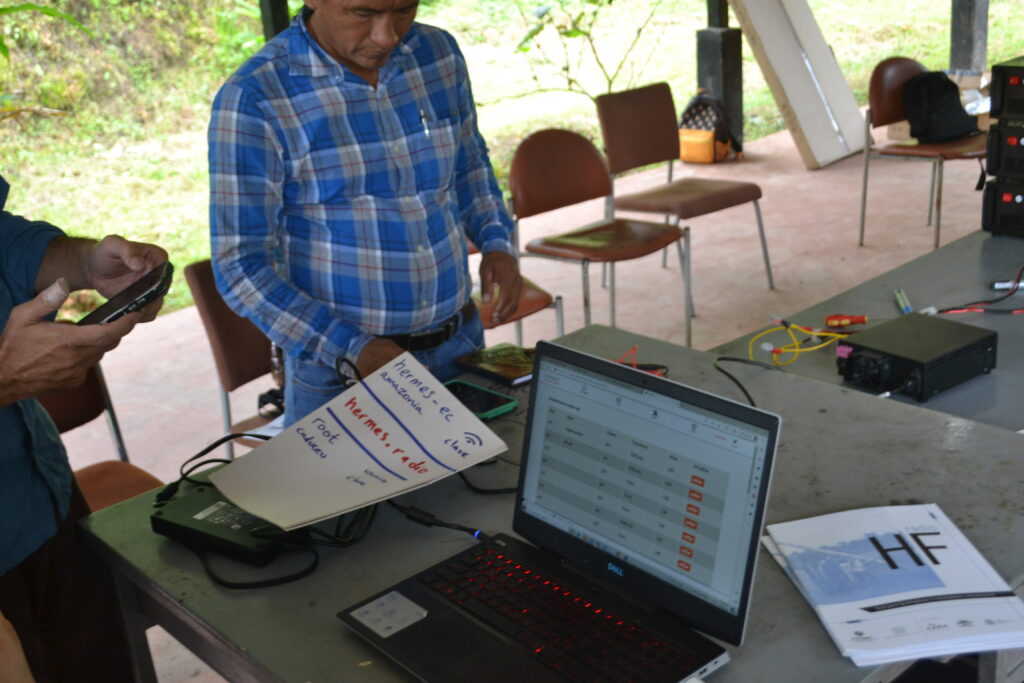Upgrading digital HF community radio services across Ecuadorian Amazon
A community radio service network enabled indigenous communities in Ecuadorian Amazon to safely transmit important information.


In 2021, 48percent.org contributed to Rhizomatica’s efforts to create digital HF community radio services for indigenous communities across Ecuadorian Amazon. The digital HF radios enable indigenous communities to safely transmit and get access to important information that is valuable and necessary for them. Due to delays in the project, it has not been finalized until now, which is why we wish to share the progress and learnings with you.
Upgrading community HF radio stations
The original aim of the project was to equip fifteen strategic communities across the Ecuadorian Amazon with upgraded digital HF radios that enable the safe transmission of digital information over high frequency using Rhizomatica’s HERMES system. These areas are under threat from environmental degradation or are important for the territorial defense strategies of the CONFENIAE, the political umbrella organizations of the 11 indigenous nationalities of the Ecuadorian Amazon, and its member nationalities.

Results of the project
In terms of equipment, 13 HERMES radios and 2 analog HF Radios with full solar arrays were installed. Two gateway HERMES stations were installed as well to route information coming from remote HERMES units to the Internet. One was located at the headquarters of the NAE (Nacionalidad Achuar del Ecuador) and the other at the headquarters of the CONFENIAE (Confederación de Nacionalidades Indígenas de la Amazonia Ecuatoriana).
The NAE gateway station in Puyo is connected to 5 remote boxes in Sharementsa, Tsekuntsa, Karaka, Mashumarentsa and Jikiamat, all of which are Achuar communities.
The CONFENIAE gateway is connected to different stations belonging to different indigenous groups as well as an NGO.
These are:
- Lagartacocha, a Siekopai community on the border with Peru.
- Tarimiat, a Shuar community.
- Lorocachi and Jatunplaya, both of which are Kichwa communities near the Peru border.
- One station, which is set up to monitor weather conditions in Sua, an Achuar community in Pastaza.
- A final unit installed on a solar-powered boat belonging to the NGO Kara Solar that transports people along the Pastaza river.
From the final two stations mentioned, in Sua and on the Kara Solar boat, an interesting result emerged, paradoxically thanks to the extra time it took to do the project, which is the observed inclusion of monitoring data from two of the project sites/partners.
Originally, HERMES was to be used to only facilitate interpersonal communication for our partners to more safely and effectively defend their land and the lives of people and other natural beings in the forest. During the second phase, Rhizomatica was requested to help figure out how to incorporate specific types of data and monitoring into the HERMES platform. This entails not just messages between people, but also data about environmental metrics to be automatically measured and sent over HERMES. As the world grapples with reaching Net-Zero and climate goals, this type of monitoring becomes increasingly important and is a direction Rhizomatica will continue to explore for HERMES in the future.

How did the results benefit the people affected?
The initial calculation proposed 1700 beneficiaries. The number of beneficiaries did not vary substantially from what was originally calculated. The ways people benefitted were also in line with what was expected. Through the HF radio systems, both digital and analog, people improved their communication opportunities, and increased their ability to send digital information to places not connected to the internet. At a community level, this increased the efficiency of planning for development projects, health, education, etc. while at the individual level, it allowed people to be in touch with loved ones and generally communicate whatever they needed to.
As mentioned, one major addition was the incorporation of environmental data monitoring. While evidence is too new to evaluate completely., it seems that over time this will become a crucial tool for amazonian communities defending their lands and nature. Due to the visibility of this project, Rhizomatica plans to work with the umbrella group for indigenous people in the Peruvian amazon and other NGOs to use HERMES as the basis for their early warning alert system, tying in remote sensors, drone photos, etc.
Unforeseen challenges
Due to numerous factors, the project went substantially over the time allotted, and had to request a no-cost project extension. The extension lasted for around 9 months. Firstly, there were resurgent Covid-19 pandemic outbreaks at the end of 2021 and start of 2022. This forced at least two delays during the first phase of the project. This pushed the start date of the training back three months. Additionally, global supply chain disruptions made it hard to produce the HERMES units, further delaying the installations. Thirdly, indigenous uprisings in Ecuador created uncertainty for the timeline of the second phase, leading to numerous months of delays and leading Rhizomatica to send HERMES boxes to Brazil for another project. Lastly, two HERMES units were damaged beyond repair during the shipping process to Ecuador.
